Understanding the meaning of the movement of a horse’s ears allows you to know what the horse is feeling. Horses communicate by moving their ears. Ear movement is the primary way a horse shows horses and people alike what they are feeling.
How The Movement Of A Horse’s Ears Is Important
Horses use their ears to communicate with people as well as other horses. Knowing what the movement of a horse’s ears means is very important so you can tell what kind of mood a horse is in. You may not want to approach a horse who has its ears pinned flat against its head as this is how they show they are angry and are potentially wanting to bite. A horse that has its ears pricked up and facing forward shows alertness and focus. There are many other things that a horse can show by ear movement. Without this form of communication and this ability to read a horse’s mood, horses would be unpredictable and that much harder to read.
The Way A Horse Shows Moods, Intended Actions, And Pain
Anger
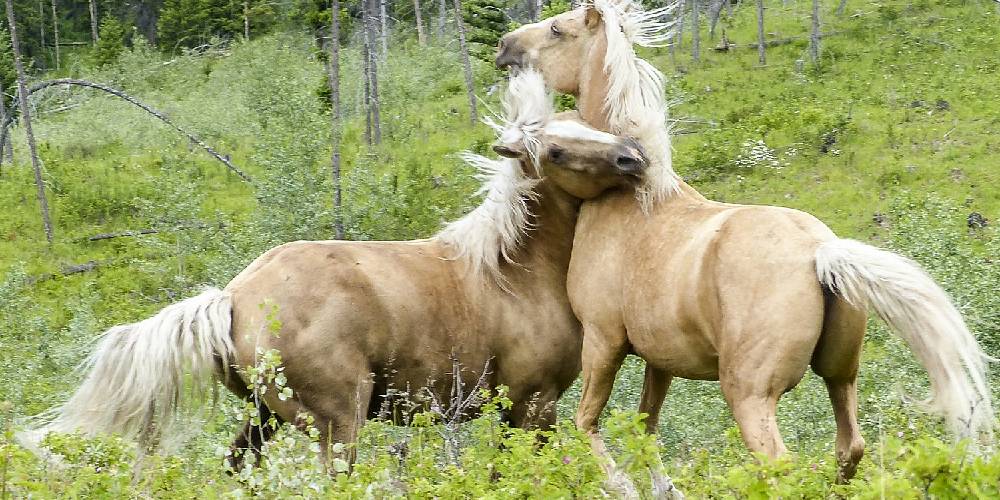
Horses become angry by people or horses invading their personal space, a rider giving them confusing cues, and if they are defending a foal or herd from a potential attacker.
The way a horse shows that they are angry is by flattening their ears back against their head. Sometimes they will do this before they buck in frustration. Other times it is to show they are angry with a potential attacker.
Horses may flatten their ears back if they feel someone is invading their personal space. One example of a time this may be shown is if they are going through the process of sheath cleaning, which is the cleaning of the horse’s penis and the skin that protects it. Because the person cleaning the sheath is repeatedly reaching their hand up the horse’s sheath and cleaning everything down there, the horse gets uncomfortable and will pin their ears and attempt to kick at the person who is cleaning them up. The reason for this response is the fact that what they are doing is invading the horse’s personal space and the horse doesn’t like it.
Wanting To Bite
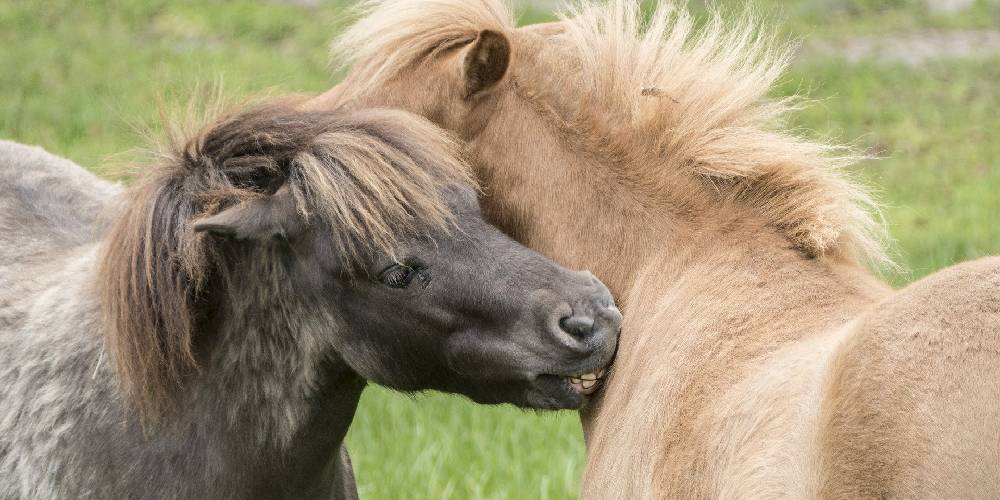
Horses often show that they want to bite by putting their ears back and extending their head forward towards the person or horse that they want to bite. This can be done towards both people and animals that they are wanting to bite.
Horses that want to bite but can’t (like a horse that is on cross ties or a horse that is tied to a rail) will sometimes bite the air while their ears are back to show their annoyance and aggravation.
Showing Dominance

In the wild, stallions will rear up and fight each other to determine who has the right to take the herd. The way that horses assert their dominance can be by charging or attempting to start a fight, but they can also show it by nipping or driving a person or a horse, again with their ears back.
When I first got my horse Cross Fiire, he was attempting to assert his dominance over the me by refusing to respond to my cues and charging me. I believe he did this because he was dominant over the herd at the barn he was at before I owned him and he thought he would be alpha again. These behaviors were soon worked out of him by my sister and I until he accepted he was below me in ranking and became one of the most responsive and loyal horses I’ve ever met.
Grumpiness
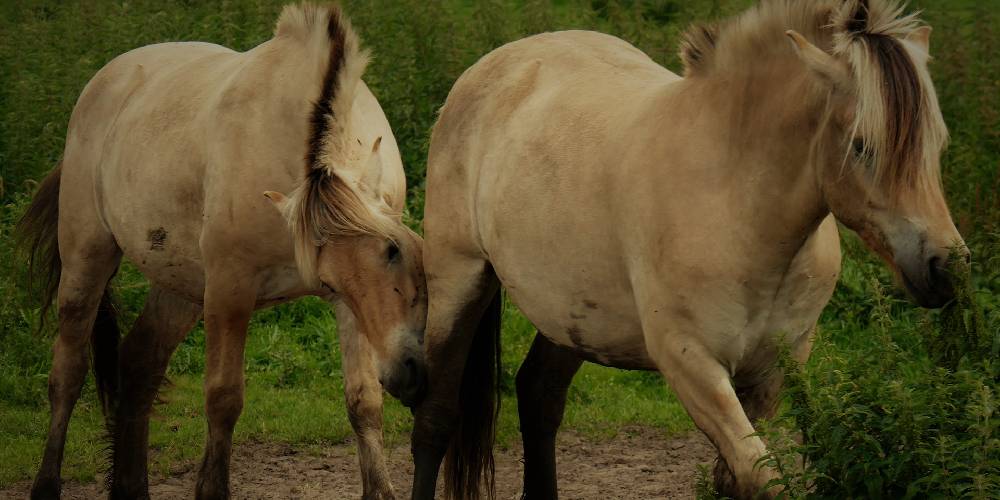
Horses are sometimes naturally temperamental and grouchy, but other times a good-tempered horse may act this way just because they are losing patience or they are getting picked on. The way a horse shows its irritation or frustration is the ears facing backward, but not completely pinned against their heads. They may also paw the ground to show their agitation.
There are grumpy horses everywhere and I personally have owned one. Cross Fiire is a grumpy old man, and he, like many horses, is girth sour. This is where a horse might act grumpy or threaten anger or threaten to bite when they are being cinched up. This grumpy behavior is often used as a warning to people when they don’t like the tightening of the girth or cinch.
Horses may offer the same warning behavior when a horse is pestering them. This is common with horses nipping each other or a horse getting too close. Horses offer a warning by demonstrating this frustrated or grumpy expression to let horses and people alike know that they are getting frustrated.
Pain

Sadly, I had to witness pain in a horse during the suffering and inevitable death of my first horse Show-Me. Horses in pain turn their ears to the side and slightly backward when they are hurting as if they are trying to hear what could potentially be causing them to hurt. This behavior and motion of the ears are more common to see when a horse is colicking, but you can also see this in a wounded horse.
Relaxation
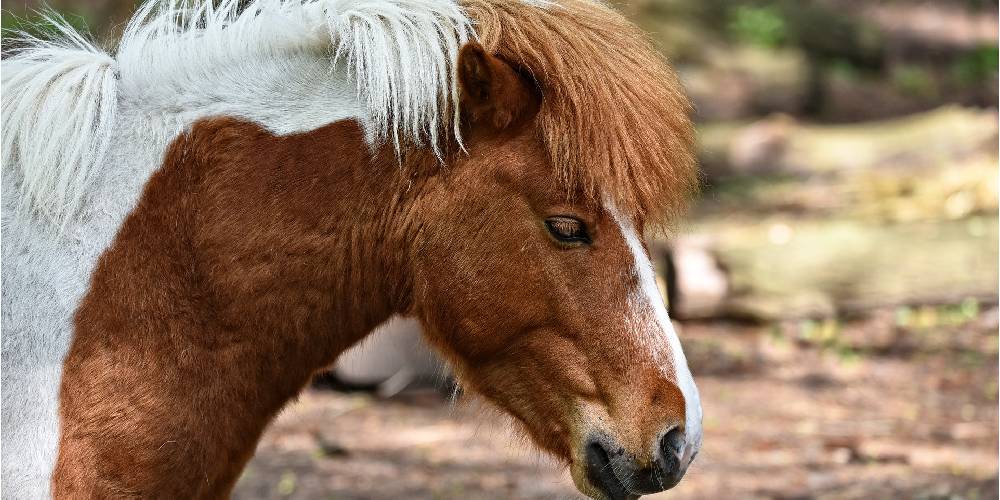
Horses can sleep standing up and rest their bodies while standing. When a horse is sleeping or relaxed the ears lose some of their tension and will relax with the front of the ear pointing left and right.
Horses also may show that they are relaxed or that they are sleeping by resting a back leg and slightly or fully closing their eyes. Often the mouth will relax and the bottom lip will loosen too.
To read more on horse’s sleep and sleeping standing up click here!
Alertness

When a horse is alert they will point their ears forward and focus on something off in the distance. Often, when a horse shows alertness, they will stop if they are moving and zero in onto whatever it is that caught their attention. Horses can become alert if they see or hear something and want to be able to know if it is something to worry about.
You might notice when getting your horses from the pasture that when they see you or hear you approaching they all will stop grazing and prick their ears up. They want to know who or what is approaching. When they know that it is only you they may come over to you as they now know you aren’t someone to worry about.
Investigating Something
When a horse investigates something or they are trying to get a feel for a scary object they point their ears at it and approach it cautiously. Because horses are blind right in front of their face, they may turn their face so their eye is facing whatever it is that they are investigating.
If a new horse is introduced to the herd they might respond the same way to the new horse as they would to an object they are trying to figure out. The horse may prick their ears at the newcomer and smell them before asserting their dominance or showing submissiveness.
Excitement
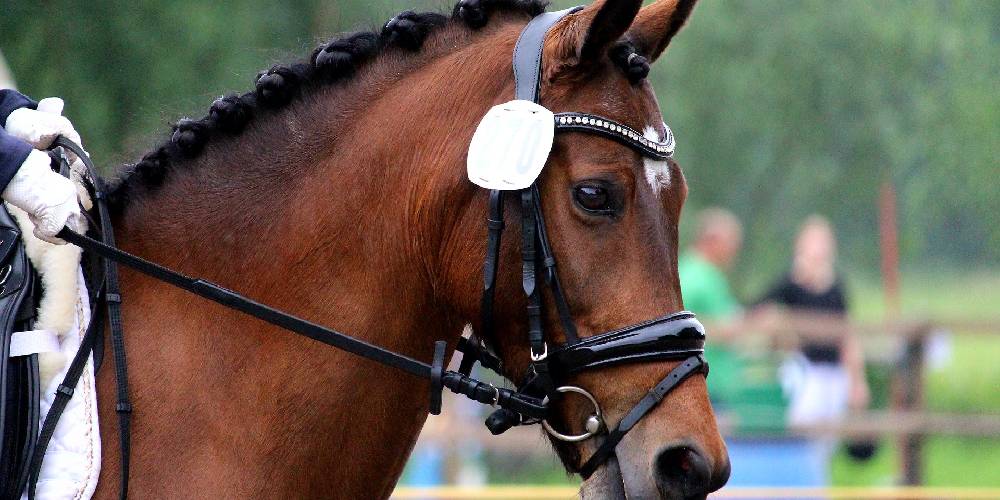
Horses show excitement by prancing, pawing, and asking for more rein when you are riding. They usually prick their ears forward and Excitement is often demonstrated in riding horses when a horse loves their job. When I was riding my horse Bronze, he was excited by the jumps in the arena even if we weren’t jumping that day.
Horses may often show similar reactions of they are nervous.
Fear
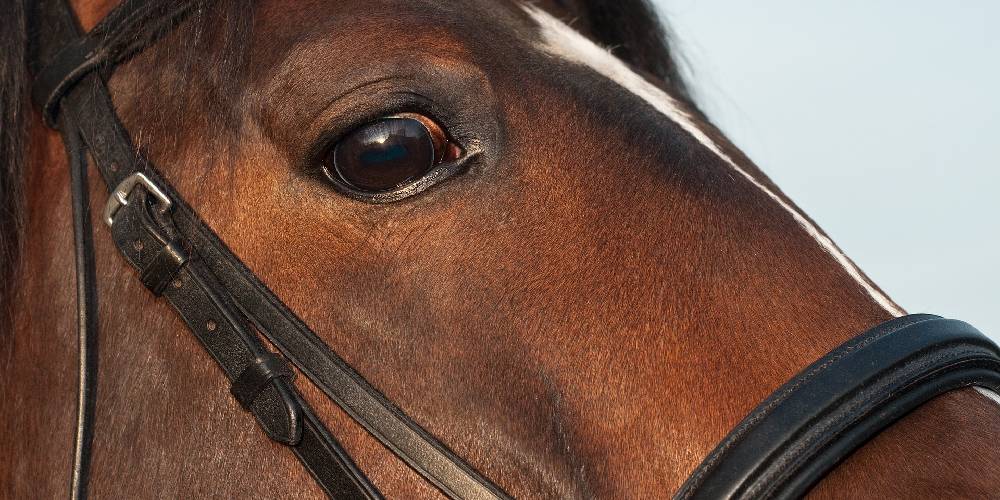
Horses, when scared, will often try to run away from things that might frighten them. It may be difficult to read fear by their ears, but their eyes will widen so you can see the whites of their eyes, and they may try to run away from whatever it is that is scaring them or making them nervous.
Listening
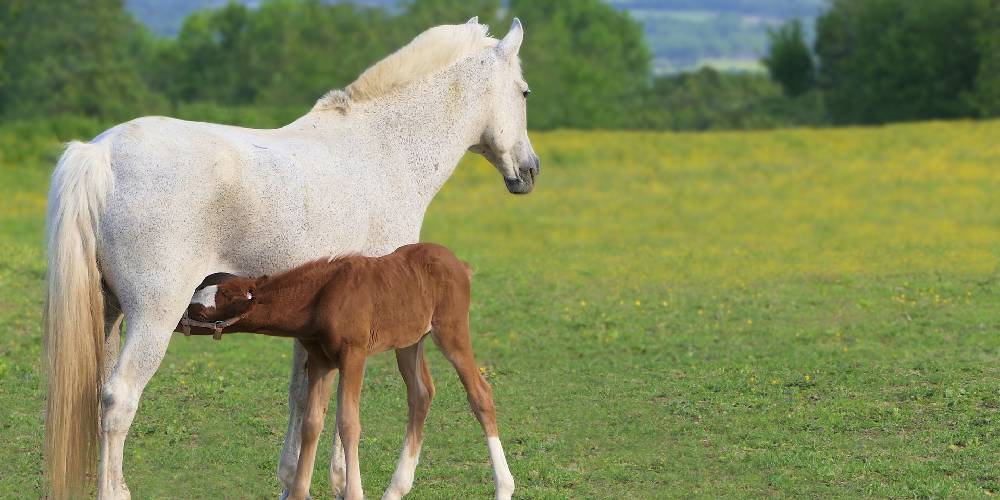
When a horse is listening to something, they will point their ears in whatever direction they are listening. If a horse is listening for a cue from its rider, it will aim its ears back towards the rider to hear for commands. If they are listening in front of them they will point their ears forward.
When a horse is watching over their herd or their offspring, horses will stand alert and be ready to protect themselves and their herd mates.

